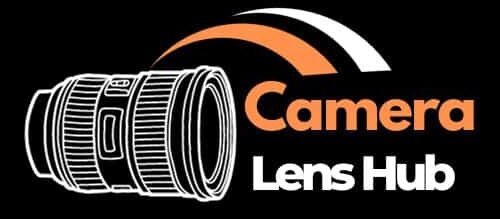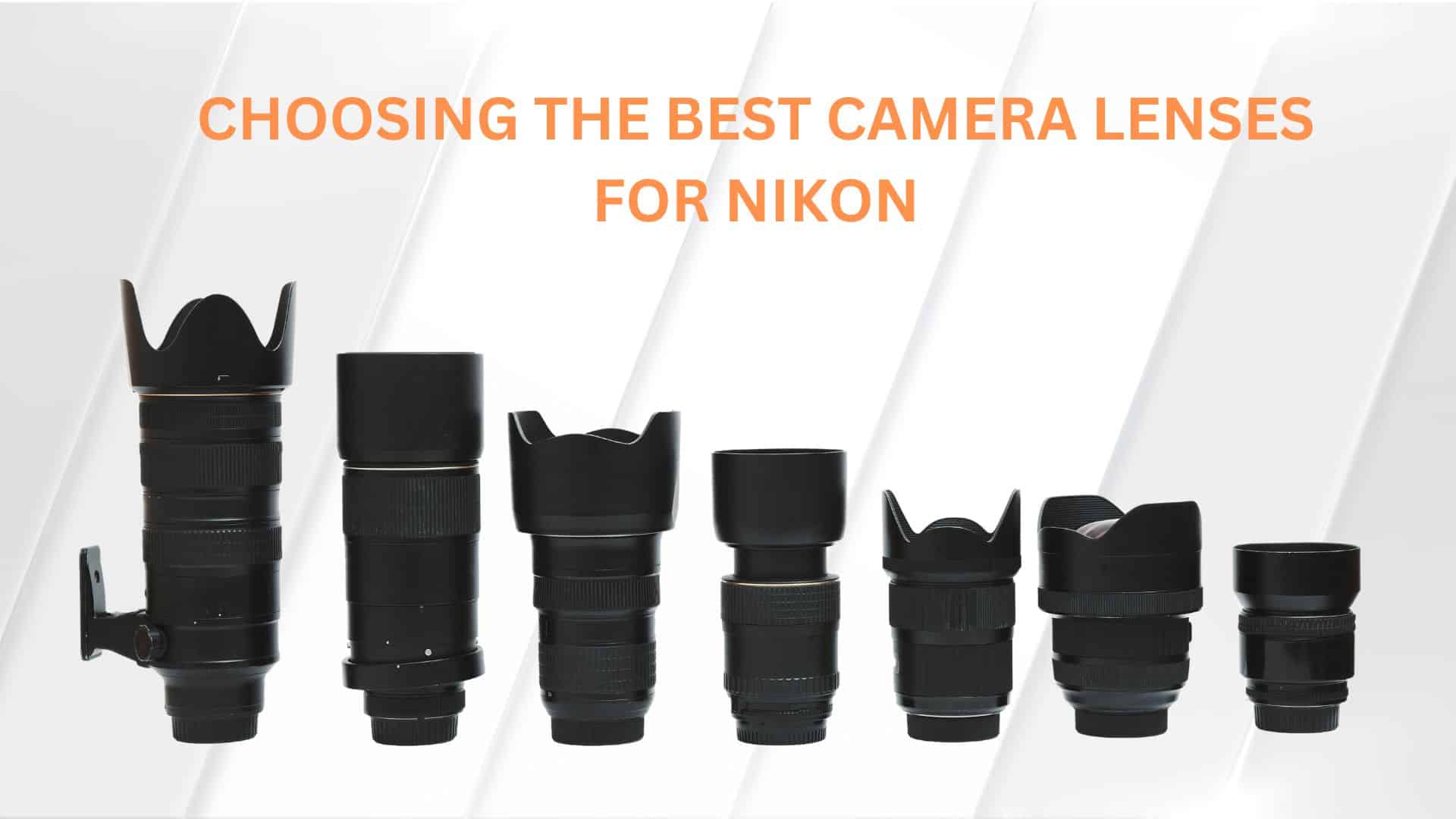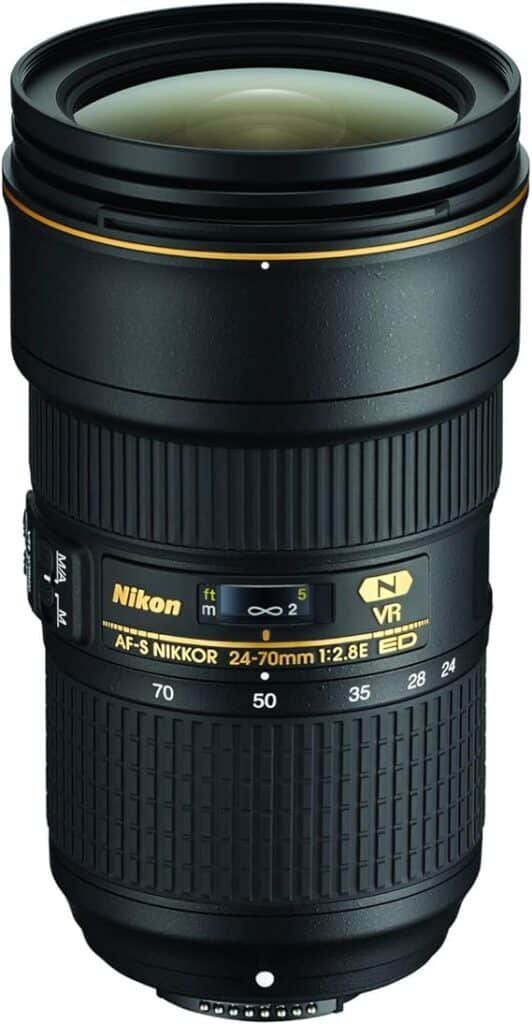Nikon is one of the most popular and respected camera brands in the world, known for producing high-quality DSLR and mirrorless cameras along with an extensive selection of compatible lenses. Choosing the right lenses for Nikon cameras can significantly enhance your photography, whether you’re a seasoned professional or an enthusiastic beginner. Nikon’s extensive lens lineup offers a wide range of options tailored to various photographic styles and needs. From wide-angle landscapes to detailed macro shots, each lens type brings unique capabilities to the table.
When selecting the best lenses for Nikon cameras, factors such as focal length, aperture, optical quality, and intended use play crucial roles. Prime lenses with fixed focal lengths like 50mm f/1.8 or zoom lenses such as the versatile 24-70mm f/2.8 are popular choices, each offering distinct advantages in different shooting scenarios. Macro lenses like the 105mm f/2.8 excel in capturing intricate details, while telephoto lenses such as the 70-200mm f/2.8 provide reach and clarity for sports and wildlife photography. This guide explores six of the best camera lenses for Nikon cameras across various categories, considering factors like build quality, performance, and value for money. Whether you’re upgrading your kit or expanding your lens arsenal, understanding these options will help you make informed decisions to elevate your photography to the next level.
Understanding Nikon Camera Lens Mounts And Compatibility
Nikon lens mount types:
Nikon, like many camera manufacturers, has utilised various lens mount types throughout its history. Here are the main Nikon lens mount types:
1. Nikon F-Mount (Nikon F):
The Nikon F-mount is one of the most iconic and enduring lens mounts in the photography industry. It was introduced in 1959 and has been the standard lens mount for Nikon’s SLR and DSLR cameras. The F-mount features a bayonet-style mount with a flange focal distance of 46.5mm. It supports a wide range of Nikon lenses, including autofocus and manual focus lenses.
2. Nikon Z-Mount:
Nikon introduced the Z-mount in 2018 for its mirrorless Z-series cameras. The Z-mount features a larger diameter and shorter flange focal distance compared to the F-mount, allowing for improved optical performance and compatibility with a new generation of lenses. The Z-mount has a bayonet-style mount with a flange focal distance of 16mm.
Lens Compatibility with Nikon Cameras:
Lens compatibility with Nikon cameras depends on the lens mount of the camera body and the type of lens being used. Here’s a breakdown of lens compatibility with Nikon cameras based on the lens mount:
1. F-Mount DSLR Cameras:
- Compatibility: Nikon DSLR cameras with F-mounts are compatible with a wide range of Nikon lenses, as well as certain third-party lenses designed for the F-mount system.
- Autofocus Compatibility: Autofocus functionality depends on both the lens and the camera body. Nikon DSLR bodies typically support autofocus with AF-S and AF-P lenses, which have built-in autofocus motors. Older lenses without built-in motors may require a camera body with a motor for autofocus functionality.
- Metering Compatibility: Nikon DSLR bodies support metering with older AI and AI-S lenses, but functionality may be limited compared to newer G and E lenses.
- DX and FX Lens Compatibility: F-mount DSLR bodies support both DX (APS-C) and FX (full-frame) lenses. DX lenses are optimised for DX-format sensors, while FX lenses cover the full sensor area.
2. Z-Mount Mirrorless Cameras:
- Compatibility: Nikon mirrorless cameras with Z-mounts are compatible with Z-mount lenses designed specifically for the Z-series cameras.
- FTZ Mount Adapter: Nikon offers the FTZ Mount Adapter, which allows F-mount lenses to be used on Z-series mirrorless cameras with full autofocus and exposure functionality.
- Native Compatibility: Z-mount lenses provide optimal performance and integration with Z-series mirrorless cameras, offering advanced optical performance and features tailored to the mirrorless system.
3. Third-Party Lenses:
Various third-party lens manufacturers, such as Sigma, Tamron, and Tokina, produce lenses compatible with Nikon cameras. These lenses are available in both F-mount and Z-mount versions and offer a range of features and price points. Compatibility with Nikon cameras may vary, so it’s essential to check compatibility specifications with your specific camera model.
Top Camera Lenses for Nikon Cameras
When it comes to capturing stunning images with Nikon cameras, having the right camera lenses can make all the difference. With a wide range of options available, choosing the best one for your photography needs can be overwhelming. Here are some of the top options available.
1. Nikon AF-S NIKKOR 50mm f/1.8G:
| Brand | Nikon |
| Focal Length Description | 50.00 |
| Lens Type | Standard |
| Compatible Mountings | Nikon F (FX) |
- Fast, upgraded f/1.8, compact FX-format prime lens. The picture angle with 35 millimetre (135) format is 47 degrees, and the maximum reproduction ratio is 0.15X.
- Focal length 50 millimetres, minimum focus distance 1.48 feet (0.45 meters).
- Newly developed optical system with aspherical lens element, exclusive Nikon silent wave motor (SWM).
- M/a focus mode switch, filter thread 58 millimetres, autofocus: Yes. Dimensions (approx.) (from the camera lens mounting flange): Approximately 2.83 inches in diameter x 2.01 inches.
- Optimised for edge-to-edge sharpness on both FX and DX format DSLRs.
- The lens is not zoomable.
The Nikon AF-S NIKKOR 50mm f/1.8G is a popular prime lens beloved by Nikon shooters worldwide. Its bright maximum aperture of f/1.8 makes it superb in low-light conditions, allowing handheld shooting at high shutter speeds even without flash. The shallow depth of field provided at this aperture is perfect for portraits, creating beautiful subject isolation and background blur. Weighing only 130 grams, it is lightweight yet durable. Autofocus is fast and silent thanks to the updated AF-S design. Sharp results and an affordable price make this 50mm prime a no-brainer purchase for any Nikon DSLR or mirrorless owner.
2. Nikon AF-S NIKKOR 24-70mm f/2.8E ED VR:
| Brand | Nikon |
| Focal Length Description | Standard |
| Lens Type | Standard |
| Compatible Mountings | Nikon F |
- Fast f/2.8 constant aperture with an electromagnetic diaphragm.
- Sensational image quality and sharpness with virtually no distortion, Focal Length Range: 24 to 70 millimetres.
- Minimum Focus Distance: 35 to 50-millimetre focal length: 1.2 feet (0.38 meter) from the focal plane; 24, 28, 70-millimetre focal lengths: 1.3 feet (0.41 meter) from the focal plane; Dimensions: Approx; 88.0 millimetres maximum diameter x 154.5 millimetres (distance from camera lens mount flange).
- 4 stops of Vibration Reduction for handheld and low light shooting, Nonstick glass makes it easier to wipe off water, dirt and smudges.
- Evolution of Nikon’s legendary 24 to 70-millimetre workhorse.Type: Fmount, Type E AF S lens with built-in CPU and F mount.Lens Elements:20.
The Nikon 24-70mm f/2.8E ED VR lens is a workhorse zoom lens beloved by professional photographers. Its constant f/2.8 maximum aperture delivers excellent low-light performance and beautiful subject isolation throughout the entire zoom range. Optical Image Stabilisation provides up to 4 stops of shake compensation, allowing handheld shooting in challenging light. Crafted from metal and rubber, it is weather-sealed and built to last. Its wide to short telephoto zoom is versatile for landscapes, portraits, travel, events and weddings. Fast and whisper-quiet autofocus makes it an excellent companion for Nikon’s high-resolution full-frame cameras.
3. Nikon AF-S NIKKOR 70-200mm f/2.8E FL ED VR:
| Brand | Nikon |
| Focal Length Description | Focal Length Range 70-200 mm |
| Lens Type | Telephoto |
| Compatible Mountings | Nikon F |
- Minimum Focus Distance- 3.6 feet (1.1 meters).
- Diaphragm blades: 9. Format: FX/35 millimetre. Minimum Aperture: f/ 22.
- Focus distance indicator- 1.1 am to infinity.
- Accepts Filter Type: Screw-on.
- Compatible with new Z Nikkor lenses, over 360 F-mount Nikkor lenses and a variety of Nikon system Accessories.
The Nikon 70-200mm f/2.8E FL ED VR is a professional-grade telephoto zoom lens favoured by sports, wildlife and wedding photographers. Its constant f/2.8 maximum aperture provides excellent low-light performance throughout the zoom range. Built with Extra Low Dispersion glass and Nano Crystal Coat, it delivers sharp, colourful images. Vibration Reduction effectively counteracts up to 4 stops of camera shake. Weather seals and magnesium alloy construction ensure durability. When paired with high-resolution Nikon DSLRs, it brings sports, nature and events to life with incredible clarity from a distance.
4. Nikon AF-S DX NIKKOR 35mm f/1.8G:
| Brand | Nikon |
| Focal Length Description | 35 millimeter aspherical. |
| Lens Type | Standard |
| Compatible Mountings | Nikon F (DX) |
- F mount lens/DX format. Picture angle with Nikon DX-format 44-degree.
- 52.5 millimetre (35-millimetre equivalent). Rear focusing, Manual focus override.
- Aperture range: F/1.8 to 22; Dimensions(approx.) 70 x 52.5 millimeter.
- Silent wave motor AF system. Accepts filter type is screw-on. Lens construction: 8 elements in 6 groups.
- Compatible formats are DX and FX in DX crop mode. Maximum reproduction ratio: 0.16x.
- The lens is not zoomable.
The Nikon 35mm f/1.8G is a popular prime lens designed for Nikon DX format DSLRs and mirrorless cameras. With an angle of view similar to a normal 50mm lens on full-frame, it serves as a versatile everyday lens. Its wide f/1.8 maximum aperture performs brilliantly in low light and produces beautiful blurred backgrounds. Autofocus is ultra-fast and whisper-quiet. At just 130g, it won’t weigh down your camera kit during long shooting days. Sharp optics and an affordable price make it an excellent option for landscape, casual, street, and portrait photography on Nikon DX bodies.
5. Nikon AF-S NIKKOR 14-24mm f/2.8G ED:
| Brand | Nikon |
| Focal Length Description | 14-24 mm |
| Lens Type | Wide Angle |
| Compatible Mountings | Nikon F (FX) |
- Focal Length Range: 14 -24 millimetres.
- Minimum focus distance is 0.9 feet. (0.28 meter), minimum f/stop 22.
- Lens construction 14/11 (2 ED glass elements, 3 aspherical lenses and 1 Nano Crystal Coat).
- The angle of View: 114° – 84°.
Nikon 14-24mm f/2.8 is an extremely wide-angle professional zoom lens popular with landscape photographers. Offering an expansive 114-degree field of view at its widest focal length, it allows for capturing vast scenic vistas in their entirety. The constant f/2.8 maximum aperture provides great performance under various lighting conditions. Advanced optical elements like Extra-low Dispersion (ED) glass and Nikon’s Nano Crystal Coat contribute to high sharpness and clarity. Weather sealing and a rugged build quality stand up to challenging shooting environments. It’s an ideal choice for landscapes, architecture, interiors and astrophotography on Nikon FX bodies.
6. Nikon AF-P DX NIKKOR 70-300mm f/4.5-6.3G ED VR:
| Brand | Nikon |
| Focal Length Description | 70-300 millimeters |
| Lens Type | Telephoto |
| Compatible Mountings | Nikon F |
- F-mount lens/DX format filter-attachment size: 58mm, (p = 075 mm) Maximum Reproduction Ratio: 0.22x. 105-450Mm (35mm equivalent) Aperture range: f/45-63 to F/32.
- Nikon VR image stabilisation. Access Lens settings in the camera menu.
- Compatible Models with limited functions: D5, D810 series, DF, D750, D7200, D7100, D5200, Nikon 1 Series with the ft1.
- Incompatible models: D4 series, D3 series, D2 series, D1 series, D800 series, D700, D610, D600, D300 series, D200, D100, D7000, D5100, D5000, D90, D80, D70 series, D3200, D3100, D3000, D60, D50, D40 series, film cameras.
- Compact, lightweight, DX-format compatible, 4.3x telephoto zoom lens with a 70-300mm focal-length range and f/4.5-6.3 maximum aperture.
- One ED glass element achieves satisfactory optical performance for any user, producing high-quality images with minimal lens aberrations.
The Nikon AF-P DX NIKKOR 70-300mm f/4.5-6.3G ED VR is a versatile telephoto zoom lens designed for Nikon DX-format DSLR cameras. It offers a broad zoom range, making it ideal for capturing distant subjects, wildlife, sports, and more. The lens features Nikon’s Pulse Motor (AF-P) for fast and quiet autofocus performance, ensuring sharp and accurate focusing. Additionally, it incorporates Vibration Reduction (VR) technology, reducing the effects of camera shake for steady handheld shooting, especially at longer focal lengths. With its compact and lightweight design, the AF-P DX NIKKOR 70-300mm lens is perfect for travel and outdoor photography adventures.
Factors to Consider When Choosing Camera Lenses for Nikon Cameras
When selecting the best camera lenses for Nikon cameras, several factors should be considered:
1. Focal Length and Aperture:
Focal Length:
- The lens’s focal length determines how much of a scene will be captured and how magnified it will appear. For Nikon cameras, you have a wide range of focal lengths to choose from, each suited for different types of photography. Whether you’re into landscapes, portraits, or wildlife photography, there’s a Nikon lens that fits your needs.
Aperture:
- The aperture is crucial as it controls the amount of light that enters the lens. A wider aperture lets in more light, which is great for low-light situations or achieving a shallow depth of field for that beautiful bokeh effect. On the other hand, a smaller aperture is ideal for landscapes or situations where you want everything in focus. Nikon lenses come in varying aperture sizes, so consider your shooting style before making a choice.
2. Lens Construction and Build Quality:
Materials:
- Nikon lenses are known for their high-quality construction, using premium materials that ensure durability and optimal performance. When choosing a lens, look for elements like ED (Extra-low Dispersion) glass or Nano Crystal Coating, which can enhance image quality by reducing chromatic aberrations and lens flare.
Weather-Sealing:
- If you’re an adventurous photographer who likes to shoot in challenging conditions, consider lenses with weather sealing. This feature protects your equipment from dust, moisture, and extreme temperatures, allowing you to focus on capturing the perfect shot without worrying about damage to your gear.
3. Special Features and Lens Accessories:
Image Stabilisation:
- Some Nikon lenses come with image stabilisation technology, which helps reduce camera shake and blur in your photos. This feature is particularly useful when shooting handheld in low-light conditions or with longer focal lengths.
Silent Focus Motors:
- For videographers or photographers who value quiet operation, lenses with silent focusing motors are a game-changer. These motors ensure fast and accurate autofocus without any noise, making them ideal for capturing video or discreetly photographing wildlife.
Lens Hoods and Filters:
- Enhance your photography experience by investing in lens accessories like hoods and filters. Lens hoods help reduce lens flare and protect the front element of your lens, while filters can be used for creative effects or to enhance colours in your photos.
Tips for Maintaining and Caring for Your Nikon Camera Lenses
1. Regular Cleaning:
- Use a soft-bristled brush or air blower to remove any dust particles from the lens surface before using a microfiber cloth.
- Moisten a lens cleaning cloth with a specially formulated lens cleaning solution to wipe away smudges and fingerprints gently.
- Avoid using harsh chemicals or abrasive materials that could scratch the lens coating.
2. Proper Storage:
- Store your Nikon camera lenses in a cool, dry place away from direct sunlight to prevent damage from temperature fluctuations.
- Use lens caps and protective cases to shield your lenses from dust, moisture, and accidental bumps.
- Consider investing in a lens pouch or padded camera bag for added protection during travel or storage.
3. Lens Calibration and Alignment:
- Periodically check and calibrate your lenses using the autofocus micro-adjustment feature on your Nikon camera.
- If you notice any focusing issues or soft images, consult with a professional technician to realign and fine-tune your lens for optimal performance.
- Keep track of any adjustments made to individual lenses to maintain consistency across your photography gear.
4. Avoid Exposure to Extreme Conditions:
- Be cautious when using your Nikon camera lenses in extreme weather conditions such as rain, snow, or high humidity.
- If necessary, use a lens hood or protective filter to shield the front element from moisture and debris.
- Allow your lenses to acclimate to the environment by avoiding sudden temperature changes, especially when transitioning from indoors to outdoors.
Conclusion
In conclusion, Nikon cameras offer a diverse range of camera lenses tailored to meet various photography needs. Whether it’s capturing stunning portraits, expansive landscapes, elusive wildlife, or dynamic sports action, Nikon lenses provide exceptional optical performance, versatility, and reliability. From the fast-aperture prime lenses ideal for portrait and low-light photography to the versatile zoom lenses suited for travel and everyday shooting, Nikon caters to photographers of all levels and interests. With innovative technologies such as Vibration Reduction (VR) and Silent Wave Motor (SWM), Nikon lenses ensure sharp, clear images and smooth autofocus operation. Whether you’re a professional photographer or an enthusiast, Nikon’s lineup of lenses offers the tools to unleash your creativity and capture memorable moments with precision and clarity.
People May Also Ask
- What do the numbers and letters on Nikon lenses mean?
- The markings denote features like autofocus (AF-S), lens type (DX/FX), and aperture (f/1.8), providing information about compatibility and performance.
- Are all Nikon camera lenses compatible with Nikon cameras?
- Nikon lenses are generally compatible with cameras sharing the same mount type, but older lenses may lack features on newer bodies.
- What’s the difference between FX and DX lenses?
- FX lenses are for full-frame cameras, while DX lenses are for APS-C sensors. FX lenses can be used on DX cameras with a crop factor.
- Do third-party Nikon-compatible lenses work well?
- Yes, but compatibility can vary. Brands like Sigma and Tamron produce lenses for Nikon cameras, offering similar features and quality.
- How do I choose the right Nikon lens?
- Consider your photography needs, focal length, maximum aperture, and budget. Researching and testing lenses can help find the perfect fit.







